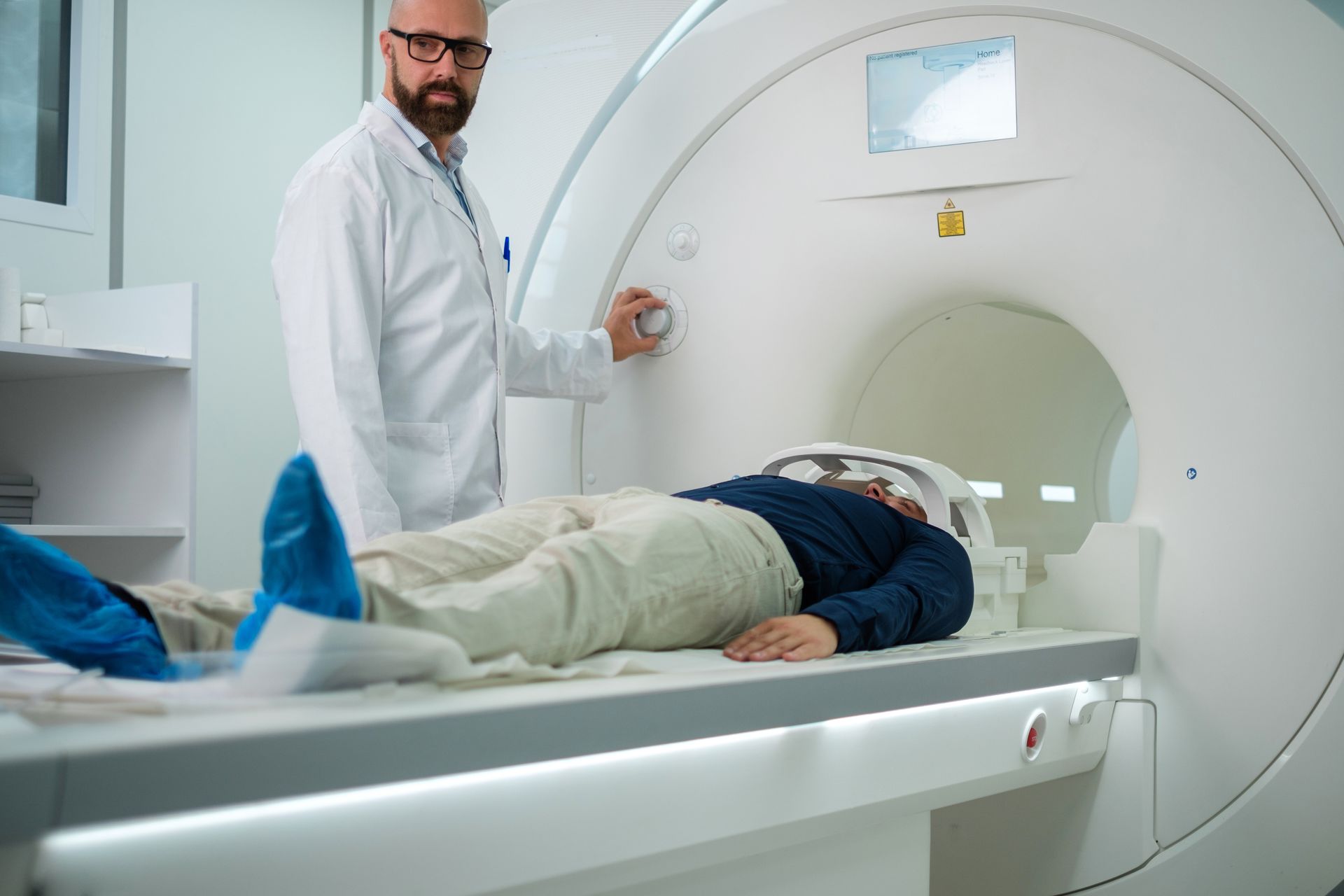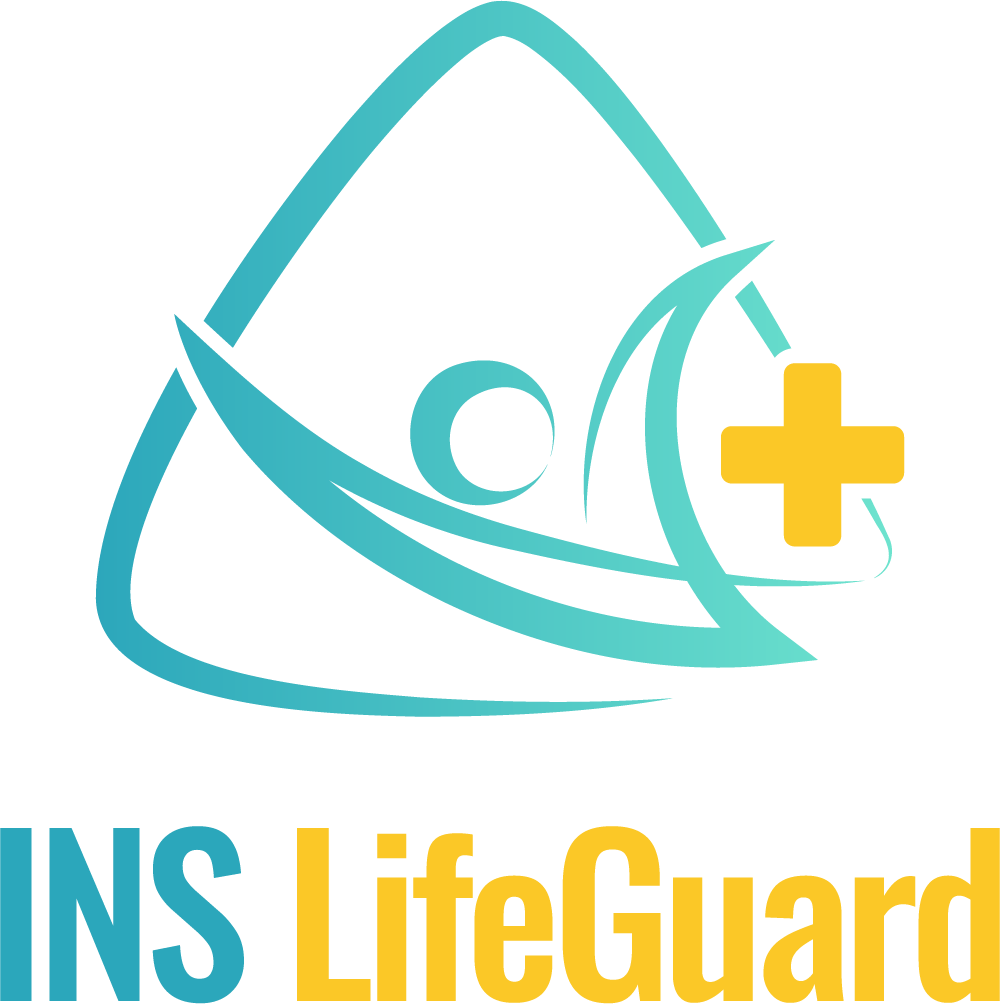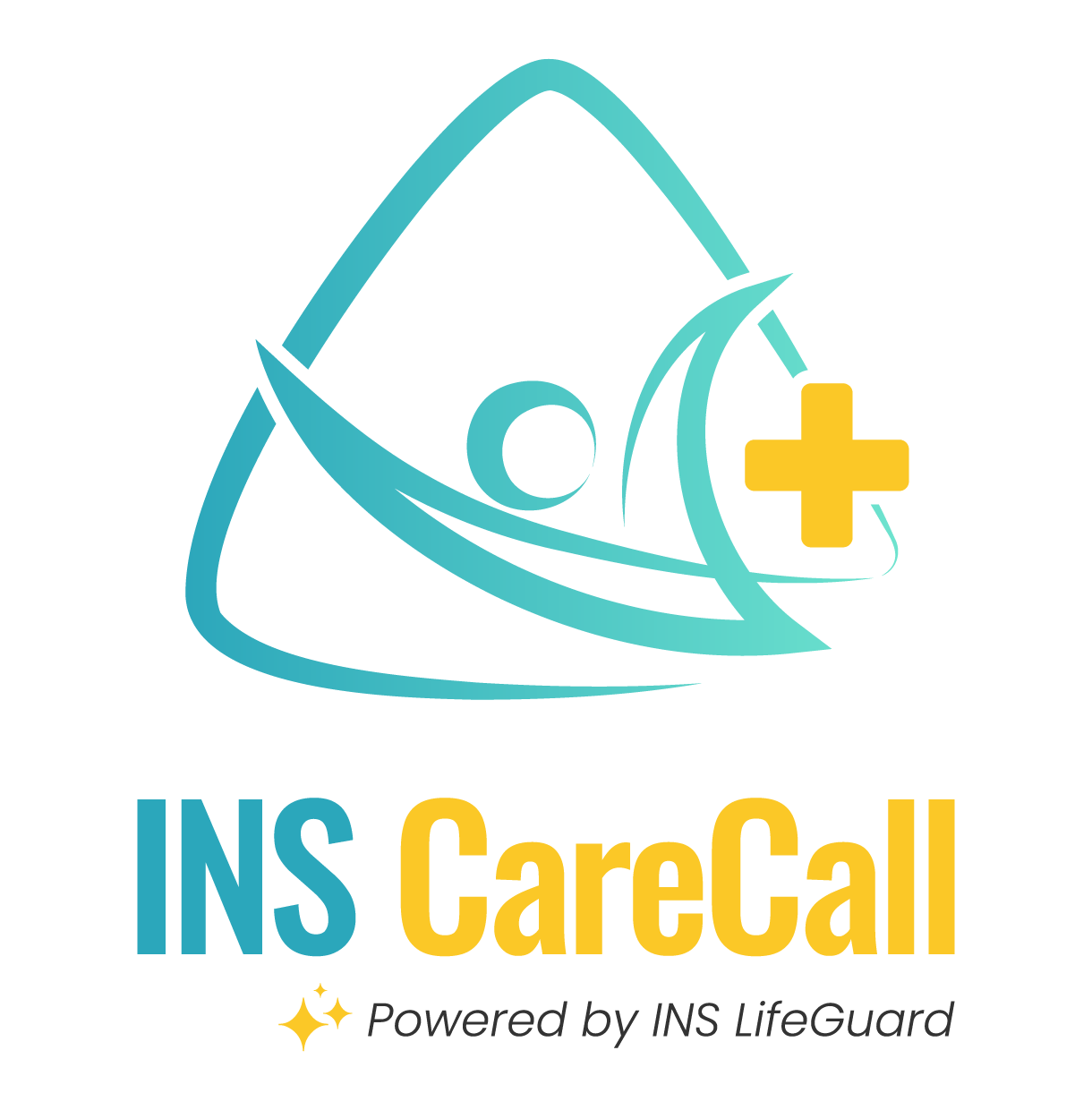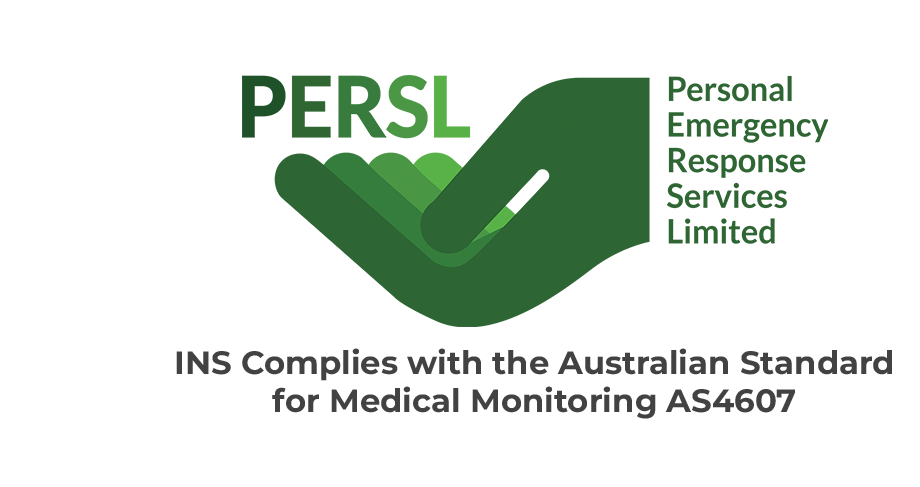Have a Question?
What is Epilepsy? A Simple Guide to Understanding This Disease

Epilepsy is a common condition that is estimated to affect 3 out of every 100 Australians and around 50 million people all over the world. Given its widespread prevalence, it becomes essential to understand more of the condition to facilitate access to proper care and support.
If you or a loved one is living with epilepsy, this blog is for you. Here, we will explore the various aspects of epilepsy, including its causes, symptoms, diagnosis, and treatment options. We'll break down complex concepts into easy-to-understand information to help you better understand its impact and how to manage it effectively. Read this blog to learn more.
What is Epilepsy?
Epilepsy, also known as a seizure disorder, is a neurological condition that is characterised by recurring, unprovoked seizures. These seizures occur due to sudden, abnormal electrical activity in the brain and are characterised by brief episodes of involuntary movement, which can affect either a specific part of the body or the entire body.
It's essential to note that epilepsy is a spectrum disorder, which means that each person's experience with seizures can vary significantly. While other people with epilepsy may experience severe seizures, others may have more subtle symptoms. Additionally, there is no current cure for epilepsy, but many individuals with the condition can effectively manage their seizures with proper medical treatment and support.
Causes
Epilepsy can have various causes, and oftentimes the exact cause is unknown. However, there are some reported factors that are known to cause epilepsy. These include:
Genetic Factors
Certain types of epilepsy can be inherited within families, and specific genetic mutations or traits inherited from relatives may raise the risk of epilepsy.
Brain Injuries
Brain injuries from accidents, falls, or head trauma, including those during birth, can cause epilepsy by affecting brain development and increasing the risk of epilepsy later in life.
Brain Tumours and Lesions
Brain tumours, cysts, or other brain abnormalities can disrupt normal electrical activity and trigger seizures in people with epilepsy. In adults aged 35 and older, stroke is a common cause of epilepsy.
Brain Infections
Certain infections that affect the brain, such as meningitis, encephalitis, or neurocysticercosis, can lead to epilepsy due to the inflammation and damage they cause to brain tissue.
Biochemical Imbalance
Metabolic disorders, such as low blood sugar (hypoglycemia), electrolyte imbalances, or disorders of amino acid metabolism, can further cause epilepsy and trigger seizures.
Developmental Disorders
Studies have revealed that epilepsy can also be associated with developmental conditions, such as autism and attention-deficit/hyperactivity disorder (ADHD).
Neurological Diseases
Underlying neurological disorders, including Dementia, Alzheimer's disease, multiple sclerosis, stroke, and Parkinson's disease, can all increase the risk of developing epilepsy.
Signs and Symptoms
The signs and symptoms of epilepsy can vary widely depending on the type of seizure and the individual. Common signs and symptoms of epilepsy include:
Seizures
Seizures are the most common symptom of epilepsy, and they can vary in type, severity, and frequency from person to person.
Confusion
An epileptic seizure can cause a person to feel confused or disoriented for a brief period.
Loss of Muscle Control
In other instances, epilepsy can cause a person to collapse or fall to the ground without warning.
Sensory Changes
People with epilepsy may perceive strange smells, tastes, or visual disturbances during a seizure.
Convulsions
Convulsions occur when a person with epilepsy experiences twitching in their arms and legs.
Emotional changes
People with epilepsy may experience sudden fear, anxiety, or déjà vu before, during, or after a seizure.
Types of Seizures
There are two main types of seizures in epilepsy that are classified based on the extent of brain involvement and the pattern of electrical activity in the brain. Let's take a look.
1. Generalized Seizures
Generalized seizures involve abnormal electrical activity throughout the entire brain from the onset of the seizure. They typically affect both sides of the brain simultaneously and can cause loss of consciousness.
Tonic-clonic seizures
Tonic-clonic seizures, formerly known as grand mal seizures, are characterised by sudden loss of consciousness, stiffening of the body (tonic phase), followed by rhythmic jerking movements (clonic phase). They are particularly frightening to witness among all epileptic seizures due to their dramatic and intense nature.
Absence seizures
Absence seizures, also known as petit mal seizures, are characterised by brief periods of unconsciousness or altered awareness. During these seizures, individuals may stare blankly into space, and exhibit subtle movements such as rapid blinking or lip-smacking. While absence seizures are generally brief and may not cause harm, they can interfere with daily activities and may require treatment to manage effectively.

Tonic seizures
Tonic seizures involve sudden, stiffening muscle contractions, that occur during sleep or while awake, lasting seconds to minutes. They can be quite dramatic and may cause the person to fall if they are standing when the seizure occurs. After the seizure, the individual may experience confusion or tiredness. While tonic seizures are often associated with epilepsy, they can also occur due to other neurological conditions or brain injuries.
Clonic seizures
Clonic seizures involve rhythmic, jerking muscle movements, which may occur independently or as part of a tonic-clonic seizure following the initial muscle stiffening. During clonic seizures, the person may lose consciousness, and the jerking movements may last for several seconds to a few minutes. After the seizure, the individual may feel tired or confused. While commonly linked with epilepsy, clonic seizures can also stem from other neurological conditions.
Myoclonic seizures
Myoclonic seizures involve sudden, brief muscle jerks or twitches, affecting specific muscles or groups and occurring on one or both sides of the body. Varying in intensity, myoclonic seizures range from mild twitches to forceful jerks that may result in dropping objects or loss of balance. These seizures may arise spontaneously or be triggered by stress, sleep deprivation, or flashing lights.
Atonic seizures
Atonic seizures, also known as drop attacks, are characterised by sudden loss of muscle tone or control. During an atonic seizure, the muscles become limp, causing the person to collapse or drop to the ground. These seizures typically last only a few seconds, but they can result in falls and injuries. Atonic seizures are distinct from other types of seizures in that they involve a loss of muscle tone rather than muscle contractions.
2. Focal Seizures
Focal seizures begin in a specific area of the brain and may affect only one side of the body or one specific part of the body. During a focal seizure, the individual may display various symptoms that may include jerking movements, tingling or numbness, sweating or changes in heart rate, or altered consciousness.
Simple focal seizures
Simple focal seizures, also called partial seizures, arise from a specific brain area and affect only one part or side of the body. They don't lead to loss of consciousness but symptoms may include muscle contractions or jerking, tingling or strange tastes, flashing lights, or cognitive shifts like fear or déjà vu. During these seizures, the person remains aware but may not control their sensations.
Complex focal seizures
Complex focal seizures, also called complex partial seizures, stem from a specific brain area and often affect consciousness. They may start as simple focal seizures with localised symptoms before progressing to altered awareness. During a complex focal seizure, the person may feel confused, perform actions without awareness, struggle to communicate, or hallucinate and feel intense fear. Afterwards, they may experience confusion, memory loss, or fatigue.
Secondary generalized seizures
Secondary generalized seizures, also known as focal to bilateral tonic-clonic seizures, begin as focal seizures in one brain area but spread to both hemispheres, causing a generalised tonic-clonic seizure. These seizures can involve muscle jerking or altered consciousness initially. As they progress, loss of consciousness and convulsive movements may occur, along with muscle stiffness, rhythmic jerking, and loss of bladder or bowel control. Confusion or fatigue may follow the seizure.
Seizure Triggers
While environmental factors can provoke seizures, they don't cause epilepsy. However, they can induce seizures in individuals already diagnosed with the condition. Many people with epilepsy can't always predict what will cause a seizure each time. Yet, they often recognise factors that increase the likelihood of having one. Common seizure triggers include:
- Chronic alcohol addiction
- Flashing lights
- Illicit drug use
- Skipping anti-seizure medicines or taking more than prescribed
- Lack of sleep
- Hormonal changes during menstrual cycle
- Stress
- Dehydration
- Skipped meals
- Illness (fever, vomiting, diarrhea or constipation)
- Caffeine
- Allergies
- Extreme changes in temperature
Risk Factors
Several risk factors can increase the likelihood of developing epilepsy. These include:
Age
Epilepsy syndromes can develop at any age, but they typically begin more frequently in children and older adults.
Family History
Genetics is one important factor in the development of epilepsy. So if you have a family history of this condition, then you might be at risk of experiencing seizures.
Prenatal Injury
During pregnancy, babies are susceptible to brain damage from factors like maternal infections, poor nutrition, or oxygen deprivation, potentially resulting in conditions such as epilepsy or cerebral palsy.
Head Injuries
Head injuries can cause epilepsy in some cases. If a person has experienced a head injury, especially if it involved loss of consciousness or significant symptoms, seeking prompt medical evaluation is crucial to assess epilepsy risk and receive appropriate care.
Brain Infection
Brain infections such as meningitis can cause inflammation in the brain or spinal cord. When this occurs, it can disrupt normal brain activity, leading to various neurological symptoms and potentially increasing your risk of developing epilepsy.
Stroke and Vascular Disease
Stroke and other vascular diseases can lead to brain damage, which may in turn trigger seizures and epilepsy. Seek medical attention if you experience any neurological symptoms, as early intervention can help prevent or manage epilepsy effectively.
Diagnosis
Generally, almost half of epilepsy cases in the world are due to an unknown cause. It's also important to recognise that not all seizures are caused by epilepsy. However, it's essential to undergo proper medical evaluation to determine the underlying cause of recurrent seizures, as epilepsy is one of the possible explanations. To diagnose epilepsy, a combination of tests and examinations are performed. These include the following:
Medical History
Medical history is a major contributor to the diagnosis of epilepsy. By understanding your past health experiences, your doctor can better assess your condition and provide appropriate care. To find out if you have epilepsy, your doctor may talk to you about your previous seizures, including the description of seizure episodes, their frequency, duration, and associated symptoms.
Neuropsychological Test
Neuropsychological tests assess cognitive function, memory, motor skills, language, and other mental abilities to help identify cognitive impairments associated with epilepsy. The test results also assist in identifying the areas of the brain affected by seizures, which is crucial for gathering valuable insights for treatment planning of epilepsy.
Blood Tests
Blood tests, such as CBC and chemistry panel, can be performed to assess one's overall health and identify conditions such as metabolic disorders, infections, iron deficiency anemia, diabetes, or other medical conditions that can cause seizures or mimic epilepsy symptoms. Through blood tests, issues like kidney and liver damage, which are crucial for adjusting your treatment and watching out for possible medication side effects.
EEG (electroencephalogram)
In some cases, EEG monitoring is performed in a hospital setting to record seizures as they occur. EEG is a non-invasive test that records electrical activity in the brain using electrodes placed on the scalp. This can detect abnormal patterns of brain waves associated with epilepsy and help determine the type and location of seizures.
CT Scan or MRI
CT scans and MRI scans are instrumental in diagnosing epilepsy by providing detailed images of the brain. These imaging techniques help identify structural abnormalities such as tumours, cysts, scars, or developmental anomalies that may be causing seizures. Additionally, they also aid in pinpointing specific areas of the brain, known as epileptogenic zones, where seizures begin.

Treatment
Treating epilepsy depends on several factors, including the type of seizures, the underlying cause of epilepsy, and individual health factors. Treatment options may include:
Medication
For most epilepsy patients, medications can effectively control seizures. However, it's important to note that while these drugs can manage the condition, they cannot exactly treat seizures, and those who take them will require ongoing medication in order to maintain seizure control.
Here's a list of some of the most frequently prescribed brand-name drugs used in epilepsy treatment.
- Sodium valproate (Epilim, Valpro)
- Carbamazepine (Tegretol, Teril)
- Lamotrigine (Lamictal, Lamotrigine Sandoz)
- Levetiracetam (Keppra, Epilim Chrono)
- Phenytoin (Dilantin, Epanutin)
- Topiramate (Topamax)
- Oxcarbazepine (Trileptal)
- Gabapentin (Neurontin)
- Pregabalin (Lyrica)
- Lacosamide (Vimpat)
Aside from antiepileptic medications, some epilepsy patients may also explore alternative treatments such as medicinal cannabis, which has been shown in some studies to help in seizure control. However, the use of medicinal cannabis for epilepsy should be approached with caution and under the guidance of a healthcare professional due to its potential side effects and legal considerations.
Lifestyle Changes
Learning triggers and improving lifestyle can both be beneficial in managing epilepsy. By identifying and avoiding seizure triggers, people with epilepsy can make necessary lifestyle adjustments to better control their condition, minimise seizure frequency, and improve their overall quality of life. Such changes may include:
- maintaining a consistent sleep schedule to minimise sleep deprivation
- avoiding alcohol and certain medications that can lower seizure threshold
- adopting a balanced diet rich in nutrients
- exercising regularly
- stress-reduction techniques such as yoga or meditation
- adhering to prescribed medication regimen
- attending regular medical appointments
- updating your doctor regarding concerns or changes in epilepsy symptoms
Vagus Nerve Stimulation
Vagus nerve stimulation (VNS) is a surgical treatment option for epilepsy that involves implanting a device called a vagus nerve stimulator to the left vagus nerve in the neck. Running from the brainstem through the neck and into the chest and abdomen, the vagus nerve regulates various bodily functions, including heart rate, digestion, and certain aspects of mood and behaviour.
During this therapy, the device delivers regular electrical impulses to the vagus nerve, programmed to stimulate the nerve at regular intervals throughout the day. While this method does not completely eliminate seizures for most people with epilepsy, it is believed that the electrical impulses may influence brain activity and help prevent abnormal electrical discharges that can lead to seizures.
Epilepsy Surgery
Epilepsy surgery is an effective option to consider if at least two anti-seizure medications have failed to control seizures. It involves removing or altering the area of the brain that causes seizures. While it may not be the primary treatment option to get, they are proven most effective when seizures occur in a single location in the brain. Some of the known epilepsy surgeries include:
- Resective Surgery
- Laser Ablation Surgery
- Multiple Subpial Transection (MST)
- Corpus Callosotomy
- Responsive Neurostimulation (RNS)
- Deep Brain Stimulation (DBS)
Ketogenic Diet
Ketogenic diet is a high-fat, low-carbohydrate diet that is typically used in cases of drug-resistant epilepsy, where seizures do not respond well to medication. For people with epilepsy, ketogenic diet works by inducing a state of ketosis.
In this state, the body switches to burning fat to produce ketones, rather than relying on carbohydrates for energy. This shift in metabolism is believed to stabilise brain activity and reduce the severity of seizures in some people with epilepsy.
While ketogenic diet can be highly effective for some people with epilepsy, it may not work for everyone. Trying this diet should be made in consultation and strict supervision by healthcare professionals.

Prevention
Preventing epilepsy entirely is not always possible since it can be caused by a variety of factors, including genetics, brain injury, infection, and other neurological conditions. However, there are some measures you can take to reduce the risk of epilepsy or manage it effectively:
Prevent Head Injuries
Preventing falls, accidents, and sports injuries is the most effective way to prevent post-traumatic epilepsy, which is epilepsy that occurs after head injuries. To minimise such risks, a personal alarm for people with epilepsy can be a lifesaving device, providing peace of mind and prompt assistance during seizures or related emergencies. It not only provides an additional layer of safety by alerting carers in the event of a seizure or fall, but it also allows people with epilepsy to live more independently.
Seek Professional Support
For people with epilepsy, seeking professional help should be a priority to effectively manage the condition and potentially prevent seizures. Qualified nurses on call can offer invaluable support and guidance, providing assistance with medication management, seizure monitoring, and timely interventions during epilepsy emergencies.
Manage Health Conditions
Certain health conditions, such as high blood pressure, diabetes, and infections, can worsen the risk of seizures for people with epilepsy. By treating and managing such health conditions, individuals with epilepsy can potentially reduce the frequency and severity of their seizures.
Limit Alcohol and Drug Use
Excessive alcohol consumption and illicit drug use can increase the risk of seizures. To prevent seizures from worsening, people with epilepsy should limit or if possible, avoid these substances and seek support from healthcare professionals.
Manage Stress
Stress is one of the major factors that can trigger seizures in people with epilepsy. By practising mindfulness, meditation, and relaxation exercises, individuals with epilepsy can better manage their stress levels and potentially reduce the severity of their seizures.
Maintain a Healthy Lifestyle
Eating a balanced diet, getting regular exercise, maintaining a healthy weight, and getting adequate sleep can all contribute to overall brain health and reduce the risk of epilepsy. These lifestyle factors support optimal brain function and neurological health, potentially lowering the susceptibility to epilepsy seizures.
Takeaway
Epilepsy itself isn't usually life-threatening, but seizures can pose risks, especially if they cause injuries or occur in hazardous situations. In addition, prolonged or continuous seizures may lead to medical emergencies if not treated promptly. Aside from medication, surgeries, and lifestyle changes, people with epilepsy should take steps to manage their condition effectively and minimise risks.
INS LifeGuard provides personal alarm devices suited for individuals with epilepsy. With features such as an emergency button, GPS tracking, fall detection, and two-way communication, individuals with epilepsy can live independently with added protection and ensure that help is available when they need it. To learn more about our products, get in touch with us at 1800 636 040 or visit our website.

About
INS LifeGuard is the only 24/7 nurse on-call personal and medical monitoring in Australia. We provide monitoring technology for both in the home and on the go and can also monitor other provider's equipment. Our services are suitable for anyone wanting support to stay independent such as the elderly, those with medical conditions and disabilities plus enhancing safety and security for lone workers.

















